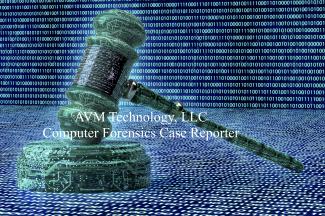Ruppert v. Alliant Energy Cash Balance Pension Plan
In the Matter of Subpoena Duces Tecum to Towers Watson & Co.
LAWRENCE G. RUPPERT, and THOMAS A. LARSON,
On behalf of themselves and on behalf of all others similarly situated, Plaintiffs,
v.
ALLIANT ENERGY CASH BALANCE PENSION PLAN, Defendant.
Case No. 2:10-mc-00010-LA
3:08-CV-00127-bbc (W.D. Wisc.)
UNITED STATES DISTRICT COURT
FOR THE EASTERN
...
In the Matter of Subpoena Duces Tecum to Towers Watson & Co.
LAWRENCE G. RUPPERT, and THOMAS A. LARSON,
On behalf of themselves and on behalf of all others similarly situated, Plaintiffs,
v.
ALLIANT ENERGY CASH BALANCE PENSION PLAN, Defendant.
Case No. 2:10-mc-00010-LA
3:08-CV-00127-bbc (W.D. Wisc.)
UNITED STATES DISTRICT COURT
FOR THE EASTERN DISTRICT OF WISCONSIN
Dated: December 28, 2010.
ORDER
It is hereby ORDERED that Plaintiffs' Motion to Compel enforcement of their January 15, 2010 subpoena duces tecum served on Respondent Towers Watson & Co. ("Towers" or "Respondent") is hereby GRANTED IN PART, as set forth below.
I. DOCUMENTS TO BE PRODUCED.
A. Respondent shall produce: All documents and electronically stored information concerning the use or potential use of stochastic modeling for any purpose relating to the WE [Wisconsin Energy Corporation Retirement Account] Plan, including but not limited to: (1) conducting asset-liability studies; (2) considering potential changes in asset allocation; (3) evaluating options with respect to changing plan design features; (4) assessing impacts relating to a possible freeze or termination of the Plan; (5) estimating or projecting (a) anticipated future interest credits (or "Indexing Rates") and/or (b) future asset returns for (i) funding, (ii) accounting or (iii) any other purpose.
B. Stochastic Modeling-Definition. "Stochastic modeling, " also known as "Monte Carlo" modeling, is defined for purposes of this Order as follows: The economic or financial technique of estimating probability distributions of potential outcomes by generating
Page 2
simulations which reflect random variation in one or more inputs over time. "Stochastic runs" are the raw data outputs generated by each simulation being modeled stochastically.
C. Examples of Responsive Stochastic Modeling Documents: The Court is informed that in August 2009 Towers produced to the plaintiffs in Thompson, et al. v. Retirement Plan of S.C. Johnson & Sons, Inc., et al., 07-cv-01047-JPS (E.D. Wis.) the following stochastic modeling documents: 9/17/02 Retirement Financial Management Annual Review Form, TPJD0068489-516; 10/26/04 Asset Liability Study Budget, TP0002997-99; 11/12/04 Reconciliation of Forecast Results, TP0003046-4477; 11/15/04 Forecast details, TP0008361-63; 11/15/04 Forecast results, reflecting the stochastic runs from Towers' Impact software, TP0008364-556; 12/16/04 Pension Asset Liability Study Presentation with user notes, TP0009192-9215. To the extent that Towers generated these kinds of documents in connection with its stochastic modeling with respect to the WE Plan, they shall be produced as documents within the scope of Section I.A. of this Order, as shall all stochastic runs related to such stochastic modeling documents.
II. RESPONDENT'S OBLIGATIONS
A. Respondent shall produce all hard-copy and electronically stored information ("ESI") documents in its possession, custody or control described in Section I of this Order. Towers shall produce documents by uploading them and the data file, image load file, and extracted text to Plaintiffs' secure FTP site in the format specified in the subpoena (including the production of files in native format). Towers shall produce within two weeks of each production of documents a Rule 26(b)(5)-compliant privilege log for any documents withheld on privilege grounds.
B. Respondent shall comply with its obligations to locate and produce responsive ESI in the following two ways:
1. Searches of Readily Available ESI.
Respondent shall confer with Towers-Milwaukee actuaries Robert Jablonowski, Daniel Bach, and Joel Sohre to determine where responsive material is or may be located or stored (including in Towers' offices or servers in Chicago, Philadelphia, and Boston). Respondent will identify all such ESI locations and storage sources to Plaintiffs and collect, review and produce all responsive documents from all of these identified locations no later than thirty days from the date of this Order.
Page 3
2. Keyword Searching of Potentially Relevant Data Sources
a. Procedure in General. Towers shall conduct keyword searches of its potentially relevant data sources in the order and manner set forth below in three phases using the sixteen terms identified below, subject to modification by Plaintiffs as described herein. To the extent that responsive information may be located in databases that cannot be searched by keyword, Towers shall manually review such databases and produce responsive documents within thirty days of the date of this Order. Towers shall disclose to Plaintiffs the databases that cannot be searched by keyword. To the extent that manual searches would be unduly burdensome, Towers shall, within seven days of the date of this Order, submit a specific proposal for searching the databases that cannot be searched by keyword. Plaintiffs will then have seven days to either agree to the proposal or suggest an alternative. The court will then issue a supplemental order specifying the procedure for searching the databases that are not amenable to keyword searches.
b. The Sixteen Keyword Search Terms. The sixteen keywords are: (1) asset liability (2) asset-liability (3) asset/liability (4) capital market assumptions; (5) capital market model; (6) capital market outlook; (7) capital market results; (8) cap link; (9) cap-link (10) cap: link; (11) caplink; (12) forecast assumptions; (13) monte carlo; (14) monte-carlo; (15) simulations; and (16) stochastic.
c. Data Sources. The data sources against which the sixteen keywords (as modified by Plaintiffs as set forth herein) shall be run shall be: (i) Shared folders and subfolders on Milwaukee server re the WE Plan; (ii) all other datasets (excluding (iii) and (iv)) that Towers knows or learns or should learn in the exercise of reasonable diligence may contain discoverable material; (iii) non-email Lotus Notes servers and non-email Lotus Notes-based databases; and (iv) Lotus Notes mailboxes of the three Towers actuaries named in this Order. Towers shall conduct the keyword searches against these data sources in three phases in the following order and as follows:
-------------------------------------------------------------------------------
|Phase|Datasets |Search Program |
|-----|----------------------------------------------------|------------------|
| |(i) Shared folders and subfolders on Milwaukee | |
| |server re | |
| | | |
| |the WE Plan; (ii) all other datasets (excluding | |
| |(iii) and (iv)) | |
|1 | |dtSearch |
| |that Towers knows or learns or should learn in the | |
| |exercise | |
| | | |
| |of reasonable diligence may contain discoverable | |
| |material | |
|-----|----------------------------------------------------|------------------|
| |(iii) Non-email Lotus Notes servers and non-email |Lotus Notes' |
|2 |Lotus |internal |
| | | |
| |Notes-based databases |search function |
|-----|----------------------------------------------------|------------------|
| |(iv) Lotus Notes mailboxes of the three Towers |Lotus Notes' |
|3 |actuaries |internal |
| | | |
| |named in this Order. |search function |
-------------------------------------------------------------------------------
d. Conduct of the Three-Phase Search Process.
Towers shall, after completing each phase of the search, produce to Plaintiffs a corresponding "hit report, " which will show the number of documents in the targeted dataset that
Page 4
contain at least one of the keywords as well as the total number of documents searched, the total number of unique documents captured by the search terms, the number of individual documents responsive to each search term and the number of unique documents responsive to each keyword. Plaintiffs will have one opportunity to modify the keywords to be used for a phase after receiving the hit report for that phase, upon which Plaintiff shall finalize the keywords to be used for that phase. Once Plaintiffs finalize the terms to be used for each phase, Towers shall run the final terms, retrieve all responsive documents and produce all such documents without any relevance review, subject only to withholding of allegedly privileged material.
Towers is obligated at all times to inform Plaintiffs on a contemporaneous basis of any errors, problems, or issues with the search process detailed herein which Towers knows or reasonably should know Plaintiffs would consider integral or material to the search, collection, and review process. This includes, but is not limited to, any syntax issues concerning search terms provided by Plaintiffs, and any other facts that Towers knows or should know that Plaintiffs would consider as impacting the reliability or accuracy of the search, collection or review process.
e. Timing of Keyword Search-Based Production.
Towers shall produce to Plaintiffs all of the documents retrieved after each phase of the search on a rolling basis without awaiting the results of the next phase of the search process. Towers shall complete the production of all documents within thirty days of the date of this Order.
III. ADDITIONAL DEFINITIONS
1. Documents and Data. The term "document" is defined to be synonymous in meaning and equal in scope to the usage of this term in Federal Rule of Civil Procedure 34(a), including, without limitation, electronic or computerized data compilations. A draft or non-identical copy is a separate document within the meaning of this term. "Document" includes but is not limited to any electronically stored data on magnetic or optical storage media as an "active" file or files (readily readable by one or more computer applications or forensics software); any "deleted" but recoverable electronic files on said media; any electronic file fragments (files that have been deleted and partially overwritten with new data); and slack (data fragments stored randomly from random access memory on a hard drive during the normal operation of a computer [RAM slack] or residual data left on the hard drive after new data has overwritten some but not all of previously stored data). The term "data" means any and all information stored on media that may be accessed by a computer.
2. The WE Plan. "The WE Plan, " or "Plan" means the Wisconsin Energy Corporation Retirement Account Plan (EIN: 39-0476280-Plan No.: 009, formerly named "Wisconsin Electric Power Company Retirement Account Plan"), as well as any plans that were later merged into it including but not limited to the WEPCo Retirement Plan-Local 2150 IBEW, Unit 13 Employees; WEPCo Retirement Plan-Local 2150 IBEW, WEPCo Employees; WEPCo Retirement Plan-Local 2150 IBEW, Southern Clerical Employees; WEPCo Retirement Plan-Local 2150 IBEW, Southern Manual Employees; WEPCo Retirement Plan-Local 2150 IBEW, Fox Valley Employees; WEPCo Retirement Plan-Local 2150 IBEW, Iron
Page 5
Range Employees; WEPCo Retirement Plan-Local 2150 IBEW, Northern Manual Employees; WEPCo Retirement Plan-Local 2150, IBEW Gas Operations, Fox Valley Unit Employees; WEPCo Retirement Plan-Local 12005 U.S.W.A. Employees; WEPCo Retirement Plan-Local 317 IUOE Employees; WEPCo Retirement Plan-Local 6-111 OCAWIU Employees; the Pension Plan for Management Employees of the Edison Sault Electric Company; the Pension Plan for the Bargaining Unit Employees of Edison Sault Electric Company; the Wisconsin Gas Company Pension Plan for Non-Union Employees; the Wisconsin Gas Company Local 7-0018-1 Pension Plan; the Wisconsin Electric Power Company's Employees' Mutual Benefit Association pension plan; the Wisconsin Michigan Power Company Retirement Plan Applicable to Management Employees; the Wisconsin Energy Corporation Production Employees Retirement Plan; and the Wisconsin Energy Corporation Operating Employees Retirement Plan. The "Plan" also includes its sponsor, participating employers, actuaries, auditors, administrators, fiduciaries, attorneys, representatives, agents, service providers, and all other persons acting or purporting to act on behalf of the Plan.
Dated at Milwaukee this 28th day of December, 2010.

